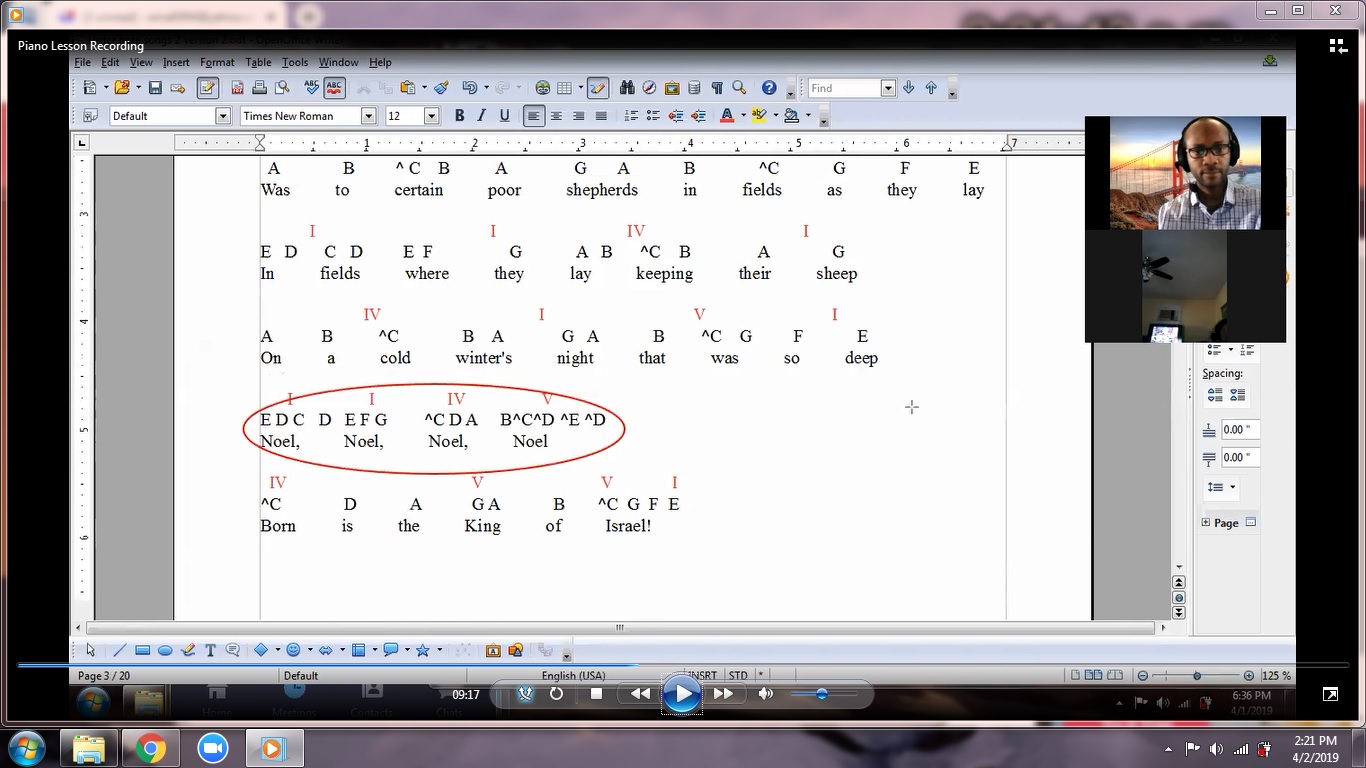Ear to Chords Worship Piano for Beginners

Lessons for Piano by Ear and Chords:
Instructions are delivered in either 1 hour or 30 minute lessons. I recommend taking one hour of lesson(s) per week. A unit of lessons can range from 1 to 4 hours under the accelerated plan (see below). Ultimately, the pace of the course will depend on the student.
- The fundamentals: This unit will acquaint you with the basic principles of posture, finger positioning, and the identification of the 12 keys on a keyboard, including an easy cheat method to identify the 12 keys quickly. ( 1 hour)
- Scales: In this unit, you will learn the major and minor scales. You will understand the mechanics behind the construction of a scale so that you can identify the scale of any of the 12 keys on your own. You will also be introduced to the concept of root note or “key of a song.”( 1 hour)
- Chord Theory: This unit will introduce you to the concept of chords, their different types, and how to identify them. Included in this unit is a secret formula for constructing major, minor and diminished chords for any key independently and quickly. At the end of this unit, you will be given the same chord practice routines that I used to skyrocket my playing skills in a few weeks of practice. (3 hours)
- Rhythms and Arpeggios: in this unit you will learn a little about timing, counting, tempo, and adding flavor to your playing by adjusting the rhythm. ( 1 hour)
- Chord progressions, part 1: This unit is central to playing by chord and ear. This is where you will learn the basic fundamentals of accompanying a song on keyboard. You will learn my top five chord progressions. These cover just about every popular song you will ever encounter. I share in this unit the number one secret to playing by ear. ( 2 hours)
- Chord progressions, part 2: Here you are given an opportunity to play several songs using various chord progressions. This is where you begin to see the value of what you have been learning. I also give you a few tips on how to determine on your own which chords will fit various situations and how to improve your play-by-ear skills. ( 2 hours)
- Chord and Melody: This unit focuses on how to play the chords on the left-hand while soloing melodies on the right-hand. I will also include several popular songs with the chords and melodies written out, in numerals and letters respectively (this approach cannot be found anywhere else), so you can thoroughly practice this vital skill. ( 2 hours)
- Inversions: In this chapter, you will learn chord inversions in a way that I have never seen anyone teach it before. You will learn the types of inversions, purpose of inversions, easy way to form inversions, but much more importantly, how and when to use them. I will save you the trouble of learning unnecessary inversions and show you super easy short-cut methods of transitioning from one inversion to another. ( 2 hours)
- Top 9 Chord types. The most useful chords you will need as beginner keyboardist are major, minor, diminished, augmented, suspended 1, suspended 2, seventh major, seventh minor, and seventh dominant. Unlike most instructions on these chords, I will not only teach you how to form them, I will teach you when and how to use them when you are accompanying a song and there is no music or chord sheet in front of you. ( 2 hours)
- Accidentals and Passing Chords: Here we explore the most basic and useful ways to play passing chords by using accidentals. The approach I use in teaching passing chords will have you sounding like a professional within a few hours of practice. You will also learn rules that will enable you to reproduce the skill of passing chords that you learn here independently with any new song. Is this not the essence of learning to play by ear? ( 2 hours)
- Miscellaneous: This unit is devoted to other important skills, resources and advice relevant to the live play-by-ear keyboardist. They include:
- How to find the key of a song by ear – the easiest method ever.
- How to use auto accompaniment feature on your keyboard to simulate a live band.
- How to use the transpose feature to accompany every song only on your favorite key.
- Some mobile phone apps and internet resources that will help you.
- How to play minor songs without learning minor scale. This trick saved me the trouble of learning the minor scale. Now I can accompany minor songs using a major scale with only a slight adjustment. ( 2 hours)
- Practicum: The purpose of this unit is to give you an opportunity to demonstrate what you have learned. You will play by ear from a list of 48 songs you have personally handpicked during the last several weeks. I will support and assist as needed. This exercise will help to reinforce the skill of playing by ear and chords. (4 hours)
Total unit hours = 24 hours
Please note that this timeline is based on the accelerated path, which requires taking an hour of lesson in a week or two. It also requires no less than 1 hour of daily independent practice. These requirements also depend on the speed of the learner.